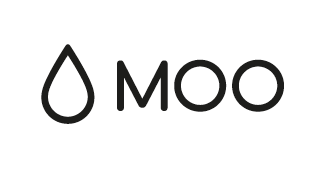 (Editor’s note: This is a sponsored tech.eu article, which means it’s independently written by our editorial team but financially supported by another organisation, in this case, MOO.
(Editor’s note: This is a sponsored tech.eu article, which means it’s independently written by our editorial team but financially supported by another organisation, in this case, MOO.
Read this if you would like to learn more about sponsored posts on tech.eu, and contact us if you’re interested in partnering with us.)
Some people squirm and recoil at the idea of contriving a ‘personal brand’. Others embrace it wholeheartedly and even go so far as to score their ‘WOW-ness’. Ultimately, if you don’t want to reduce your personal and professional life into a (digital) persona, you don’t have to.
Alternatively, if you want to manage your reputation to increase your employability and address the changing economic climate, that’s also your choice.
However, when it comes to building a startup, it’s a different story. There’s not so much leeway. If you’re a founder working on a startup, branding shouldn’t just be an afterthought.
According to the American Marketing Association Dictionary, a brand is:
a customer experience represented by a collection of images and ideas; often, it refers to a symbol such as a name, logo, slogan, and design scheme.
Brand recognition and other reactions are created by the accumulation of experiences with the specific product or service, both directly relating to its use, and through the influence of advertising, design, and media commentary.
A strong brand can influence a number of areas in your business, from creating trust between your company and its users to attracting new talent and customers.
So how can entrepreneurs develop a brand strategy? We spoke to two experts about what to consider when building a brand as a European startup.
1) Have a great product

Before you even put a dime into marketing and branding, think about your product/service, its value proposition and whether it’s actually ready to go out into the world, says Jess Erickson, Director of Marketing at US-based seed fund and startup accelerator 500 Startups. (Disclosure: 500 Startups is an investor in tech.eu.)
“First and foremost, your product has to be excellent. You could put all the marketing behind your product, but if it sucks, you might drag people into it but they’re eventually going to leave. I’ve seen companies do this time and time again – they waste so much money and time on marketing and don't focus enough on the product,” says Erickson, who has previously worked in a number of communications and PR roles with companies such as 6Wunderkinder and General Assembly.
2) Distinguish the difference between branding, marketing and PR
Despite being dimly aware that branding is a necessary component in building a startup, many founders often confuse the roles of branding, marketing and PR in their business.

Linsey Fryatt, Managing Director in Germany at Clarity PR, works with tech startups to craft media relations campaigns to communicate their brand messages more effectively. When brainstorming with clients, she says that sometimes they’ll suggest ideas that would fit as a great marketing strategy, but not so much as PR one. “Marketing and branding should come first,” she explains, “And that’s about deciding where it’s going to sit in people’s consciousness and what values you are trying to make them empathise with.”
As for differentiating between the three business disciplines, she says branding involves everything from selecting fonts/colours to using certain keywords to describe the product, whereas marketing is taking a brand identity to the outside world and crafting strategies to cement those values.
“Once you’ve got that in place, PR comes in and helps you take that to the public. Most of the time – but not always – that means press releases, although that’s changing with social media,” Fryatt adds.
3) Choose a good startup name
The list of terrible startup names is growing at an astonishing rate. Please don’t add to it with a name that's an ugly portmanteau, has nonsensical capitalisation or sounds like a half-sneeze.
“There are so many awful startup names,” admits Erickson candidly.
Her advice to founders? Invest time into thinking of something that's catchy, simple, memorable and doesn't include too many syllables.
“If you’re a startup founder and you told me the name of your company, I should be able to remember it, know how to spell it and it shouldn’t be a word like ‘Vine’, where if I Googled it, your company would obviously not show up,” she says.
4) Don't use jargon
It’s easy to get wrapped up in tech and entrepreneurial language when talking about your business, but it’s important to remember that not everyone gets revved up like you when talking about ERP, CRM, KPIs or Node.js. When in doubt, KISS.
“You should be able to describe what your company does to anyone and be able to explain your product to your grandma or grandpa,” says Erickson.
“Sometimes, I think we get into this tech bubble and use too much jargon and acronyms. Speak in a normal way when you’re talking to traditional media outlets... Once you get that down pat, make sure everyone else knows the communication and your brand will propel forward."
5) Ask yourself some questions
Once your marketing department has established a brand identity through research of the target market and the ideas/thoughts/feelings that make them tick, it’s time to consider how PR can be used to propagate those values.
“All the time, we get clients who say, ‘We want to create a buzz’ or ‘We want to get into TechCrunch’ and there’s no real sense of what that’s going to achieve,” says Fryatt. She recommends first asking yourself: What do you want to happen from this? Ultimately, do you want to drive sales? Acquire users? Land partnerships? Garner investor attention?
“Once that’s established, then it’s about asking, ‘Who do you want to speak to?’ Which is kind of the same as, ‘Who do you want your audience to be for this communication?’" she adds.
6) Contextualise your product and create a compelling story
So you’ve built a product that you think is bomb and brilliant, but why should anyone else but you (and your team) care? Making something available is not enough for people to start clamouring about it.
“The fact that your product exists isn’t news. It’s great for you and it’s your baby, but it’s like someone putting an announcement of their baby in the newspaper, or posting baby photos on Facebook. Okay, well yeah, that’s good for you,” says Fryatt.
Since working with European startups, particularly ones in Germany, she’s noticed that companies tend to focus more on executing products, rather than raising awareness of its existence or creating a story around it for the public. “Put it in context,” advises Fryatt. This means thinking about whether you have researched your market, your positioning, what its overall worth is, and considering what extra information you can bring to the table as a brand.
Crafting a compelling story is also important in garnering press mentions and shaping perceptions of your brand to your user base, says Erickson.
She adds: “Articulate how you’re solving a problem and create a great story about how your company fits into the bigger picture – companies doing that are the ones getting mentioned in the media. In turn, your brand becomes more and more powerful from that.”
7) Be aware of cultural nuances
'Going global' is a goal for many European startups. Whether that means expanding to a couple of additional key markets or going to the US, Fryatt says founders should ensure they understand the cultural landscape of their new customers – or hire someone who does. “Many great products falter because of naivité when launching abroad,” she says.
8) Establish a voice through content creation
When first starting out and establishing a brand, it’s likely you won’t get much attention. Erickson recommends creating content – in the form of a company blog – to build your own audience.
“It could be on anything from writing about a programming language or jotting down thoughts on the fintech industry and how it's moving forward. Eventually, you might see more and more people coming back to read your blog,” she explains, "It can be a helpful way to establish more of a brand presence as well as an authoritative voice.”
9) Be transparent
The difficulty of managing a brand is that as an entrepreneur, you really can’t control everything – and much of it lies in the hands of the customers. Any misstep can cause a media storm and lead users to perceive your brand and company in a negative light. In the event that something has gone wrong, how can you deal with this?
Fryatt suggests addressing the problem head-on in an honest and transparent manner. “Be like, ‘Look we’re humans, we messed up. Here’s what we’re doing to fix it',” she says, “But ask professionals to test it and make sure it’s not a lame next step that could misfire as well.”
Most importantly, don’t take things too personally. Many entrepreneurs get really offended by bad reviews or negative comments, because there’s so much passion involved with building a product, but Fryatt says its important not to get too embroiled in that. “Take a deep breath. Have a think before you go to that keyboard and react personally,” she adds.
10) Invest in media training
At a certain stage, it could be beneficial for companies to invest in a media training program in order to protect the brand, says Erickson. After all, it’s better to prevent a disaster from happening, than scrambling to recover from one.
“It doesn’t have to take much time. Companies could invest just one day for everyone to go through sessions to learn talking points,” she says, “Because what if an investor came up to a booth at TechCrunch Disrupt and the CTO wasn’t given talking points about how much money has been raised or how many employees in the company there are? It’s important that everyone’s on the same page and that all these notes are top of mind.”
READ MORE: A guide to networking for new entrepreneurs and early-stage startups
------
A word about MOO (from MOO):
This post was sponsored by MOO, an award-winning print and design company specialising in premium business stationery and promotional materials. MOO makes it simple to create beautiful business stationery that’ll help you start conversations like MiniCards, an extra-thick Luxe range and square business cards. You can even have a different image on every card or sheet in a pack with Printfinity.
MOO offers short print runs and next-day delivery and they’ll move heaven and earth to ensure you’re happy with your order. To learn more about MOO, click here.
Featured image credit: Crystal Eye Studio / Shutterstock


